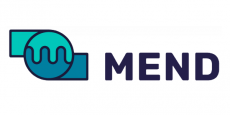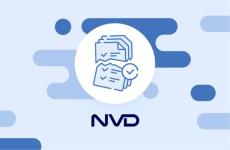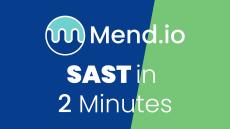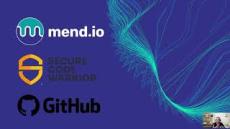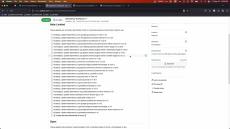|
By Jeff Martin
The risk both to and from AI models is a topic so hot it’s left the confines of security conferences and now dominates the headlines of major news sites. Indeed, the deluge of frightening hypotheticals can make AI feel like we are navigating an entirely new frontier with no compass. And to be sure, AI poses a lot of unique challenges to security, but remember: Both the media and AI companies have a vested interest in upping the fright hype to keep people talking.
|
By Tom Abai
*April 1 update. it was confirmed that Fedora 40 is not affected by the backdoor. However, users should still downgrade to a 5.4 build to be safe. On March 29th, 2024, a critical CVE was issued for the XZ-Utils library. This vulnerability allows an attacker to run arbitrary code remotely on affected systems. Due to its immediate impact and wide scope, the vulnerability has scored 10 for both CVSS 3.1 and CVSS 4, which is the highest score available.
|
By Tom Abai
Early on March 28, 2024, the Mend.io research team detected more than 100 malicious packages targeting the most popular machine learning (ML) libraries from the PyPi registry. Among those libraries are Pytorch, Matplotlib, and Selenium.
|
By Ariel Shuper
Containers have taken over the world of software development. According to Gartner analysts, “90% of global organizations will be running containerized applications in production by 2026,” up from 40% in 2021. Containerized applications provide enterprises with an agile, modern approach in the age of cloud computing; safeguarding these technologies from existing and future threats requires equally modern methods.
|
By AJ Starita
While cloud-native development brilliantly solves problems related to scalability and effective resource use, a more complex architecture and new security challenges come along for the ride as well. The added layer of abstraction of container architecture can make tracking down vulnerabilities and poorly stored secrets, assessing true risk, and enforcing policies difficult for security teams using only traditional AppSec tools.
|
By AJ Starita
Headed by NIST, an American government institution, the National Vulnerability Database (NVD) contains vulnerability data that’s been key to protecting organizations both within and without the US borders for more than 20 years. Many security policies from both commercial and government organizations require that vendors take care of vulnerabilities of a particular severity as given by the NVD within a certain number of days.
|
By AJ Starita
Securing AI is a top cybersecurity priority and concern for governments and businesses alike. Developers have easy access to pre-trained AI models through platforms like Hugging Face and to AI-generated functions and programs through large language models (LLMs) like GitHub Co-Pilot. This access has spurred developers to create innovative software at an enormously fast pace.
|
By AJ Starita
Are Software composition analysis (SCA) scans and container scans the same thing? The short answer is yes… and no. A comprehensive container image scan applies SCA specifically to containers in combination with other analyses particular to containers, such as how they’re configured to deploy and the presence of secrets. Read on to learn the key differences.
|
By AJ Starita
Containers offer many benefits, including lightweight portability from one environment to another, but they add a layer of complexity to application security that can introduce additional risks. There are many ways a container can become vulnerable to attack: through its source code, how the container is built, how the container is configured, how it secures secrets, and how it interacts with the host and other containers. Each of these avenues has its own security solutions and best practices.
|
By Jeff Martin
As the name might imply, it’s important to keep secrets secret. Access to even the smallest of secrets can open a window for attackers who can then escalate their access to other parts of the system, allowing them to find more important secrets along the way. Poor practices can leave many secrets lying around unprotected and just one seemingly unimportant secret can lead to a broad security breach.
|
By Mend
Maximize your Bitbucket Cloud security with a one powerful integration. Get automated dependency updates with Mend Renovate, open-source security with Mend SCA, and code flaw detection with Mend SAST to streamline your workflow and code protection. Mend.io.
|
By Mend
A quick overview of our SAST offering from both a developer and AppSec perspective.
|
By Mend
This video describes open source license notices, why they are required and how to set the notice within the Mend SCA user interface.
|
By Mend
How do you build a successful AppSec program? Today, we’re focusing on an area where we have great evidence for a specific best practice – Repository Integration. Choosing where to deploy SCA scans can have a major impact on the success of your AppSec program. You can boost the value of Mend SCA by scanning in your repositories, and we want to show you how!
|
By Mend
Mend.io, formerly known as Whitesource, has over a decade of experience helping global organizations build world-class AppSec programs that reduce risk and accelerate development -– using tools built into the technologies that software and security teams already love. Our automated technology protects organizations from supply chain and malicious package attacks, vulnerabilities in open source and custom code, and open-source license risks. With a proven track record of successfully meeting complex and large-scale application security needs, Mend.io is the go-to technology for the world’s most demanding development and security teams. The company has more than 1,000 customers, including 25 percent of the Fortune 100, and manages Renovate, the open source automated dependency update project.
|
By Mend
Reduce Technical Debt with Scalable Automated Dependency Management Regularly maintaining and updating dependencies is crucial to ensuring application security, but in today’s high-volume development world, companies often struggle to balance security risk with development deadlines. Renovate Enterprise Edition helps teams cut technical debt while still meeting deadlines using a solution built for the needs of enterprise development teams. Now, companies can provision as many resources as they like to cover the size and scale of their entire organization without suffering performance problems due to resource limitations.
|
By Mend
Reduce Technical Debt with Scalable Automated Dependency Management Regularly maintaining and updating dependencies is crucial to ensuring application security, but in today’s high-volume development world, companies often struggle to balance security risk with development deadlines. Renovate Enterprise Edition helps teams cut technical debt while still meeting deadlines using a solution built for the needs of enterprise development teams. Now, companies can provision as many resources as they like to cover the size and scale of their entire organization without suffering performance problems due to resource limitations.
|
By Mend
Mend Renovate scans your software, discovers dependencies, automatically checks to see if an updated version exists, and submits automated pull requests. Mend.io provides Renovate as an open source solution as part of our support for the developer community. For those customers that need a fully scalable, fully supported, fully automated solution, we offer Renovate Enterprise Edition.
|
By Mend
AppSec and software supply chain security require more than a loose collection of tools and a vulnerability remediation process. A holistic approach covers risk assessment, a secure software development life cycle, software composition analysis (SCA), SBOMs, static and dynamic application security testing (SAST/DAST), workflow automation, automated remediation, runtime protections, compliance reporting and more. Successful implementation of this holistic approach enables companies to shrink their overall attack surface and reduce technical and security debt.
|
By Mend
Behind every developer is a beloved programming language. In heated debates over which language is the best, the security card will come into play in support of one language or discredit another. We decided to address this debate and put it to the test by researching WhiteSource's comprehensive database. We focused on open source security vulnerabilities in C, Java, JavaScript, Python, Ruby, PHP, and C++, to find out which programming languages are most secure, which vulnerability types (CWEs) are most common in each language, and why.
|
By Mend
We surveyed over 650 developers, and collected data from the NVD, security advisories, peer-reviewed vulnerability databases, issue trackers and more, to gather the latest industry insights in open source vulnerability management.
|
By Mend
Developers across the industry are stepping up to take more responsibility for their code's vulnerability management. In this report we discuss trends in how security is shifting left to the earliest stages of development, putting the power developers in the front seat. We explore the growth of automated tools aimed at helping developers do more with fewer resources and look for answers on what is needed to help close the gap from detection to remediation.
|
By Mend
Software development teams are constantly bombarded with an increasingly high number of security alerts. Unfortunately, there is currently no agreed-upon strategy or a straightforward process for vulnerabilities' prioritization. This results in a lot of valuable development time wated on assessing vulnerabilities, while the critical security issues remain unattended.
- April 2024 (1)
- March 2024 (7)
- February 2024 (6)
- January 2024 (4)
- December 2023 (5)
- November 2023 (7)
- October 2023 (9)
- September 2023 (19)
- August 2023 (14)
- July 2023 (13)
- June 2023 (15)
- May 2023 (11)
- April 2023 (10)
- March 2023 (12)
- February 2023 (10)
- January 2023 (14)
- December 2022 (14)
- November 2022 (11)
- October 2022 (16)
- September 2022 (7)
- August 2022 (4)
- July 2022 (4)
- June 2022 (11)
- May 2022 (13)
- April 2022 (9)
- March 2022 (7)
- February 2022 (6)
- January 2022 (9)
- December 2021 (15)
- November 2021 (5)
- October 2021 (5)
- September 2021 (5)
- August 2021 (4)
- July 2021 (4)
- June 2021 (4)
- May 2021 (4)
- April 2021 (7)
- March 2021 (4)
- February 2021 (4)
- January 2021 (3)
- December 2020 (2)
- November 2020 (3)
- October 2020 (5)
- September 2020 (5)
- August 2020 (4)
- July 2020 (7)
- June 2020 (7)
- May 2020 (6)
- April 2020 (16)
- March 2020 (1)
- October 2018 (1)
No component overlooked. Mend identifies every open source component in your software, including dependencies. It then secures you from vulnerabilities and enforces license policies throughout the software development lifecycle. The result? Faster, smoother development without compromising on security.
Not all vulnerabilities are created equal. Mend prioritizes vulnerabilities based on whether your code utilizes them or not, so you know exactly what needs your attention the most. This reduces security alerts by up to 85%, allowing you to remediate more critical issues faster.
Complete Platform:
- Mend Core: We help you keep things in order. Mend is built to streamline your open source governance. With a full layer of alerting, reporting and policy management, you are effortlessly secure and always in control.
- Mend for Developers: Mend for Developers is uniquely designed to simplify developers’ work, while keeping the code secure. Its suite of tools helps speed up integration, find problematic components, and remediate them quickly and easily.
- Mend for Containers: Mend integrates into all stages of the container development lifecycle, including container registries and Kubernetes with automated policy enforcement for maximum visibility and control.
The simplest way to secure and manage open source components in your software.



